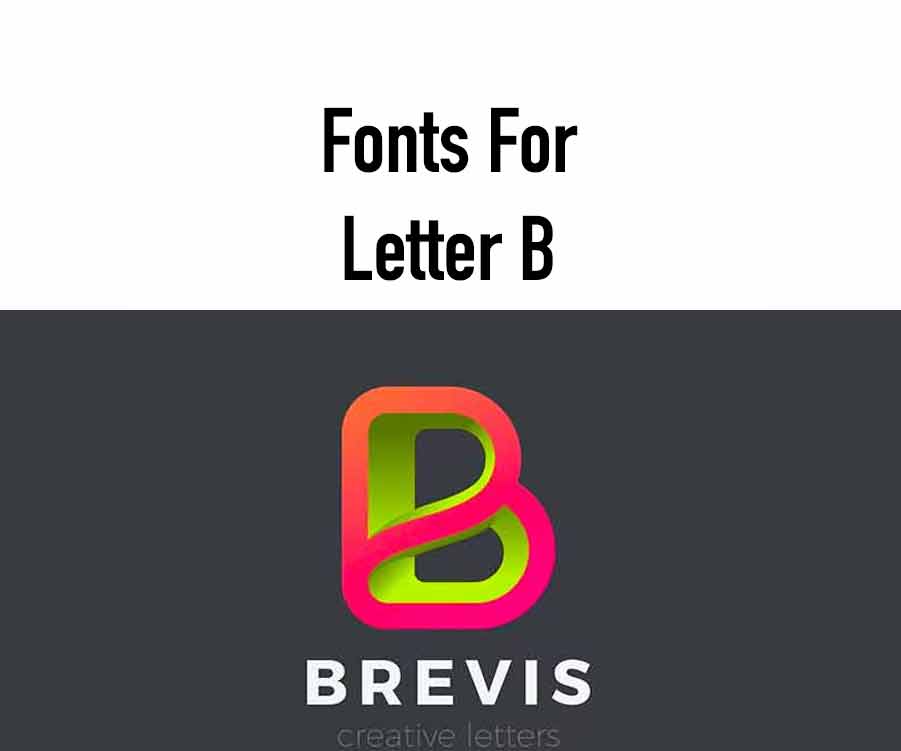Logo design is an essential aspect of branding and marketing for any business, and unique fonts can play a significant role in creating a memorable and recognizable logo. This is why it is important for any designer to understand the process, and for that we have shared some of the Vital Tips For Effective Logo Design With Unique Logo Fonts for you.
In this article, we will explore the fundamentals of logo design, the importance of unique fonts, and the design process involved in creating a logo with unique fonts.
A logo is a visual representation of a brand, and it is essential to create a logo that reflects the brand’s values, personality, and message.
The logo should be simple, memorable, and versatile enough to be used across various mediums. The design elements of a logo, such as color, typography, and shape, should be carefully chosen to create a cohesive and consistent brand identity.
Exploring Unique Fonts The font used in a logo can have a significant impact on how the brand is perceived. Unique fonts that are not commonly used can help a brand stand out and create a distinctive identity.
However, it is essential to ensure that the font is legible, scalable, and compatible with various mediums. The font should also reflect the brand’s personality and message.
Key Takeaways
- Logo design is a crucial aspect of branding and marketing for any business, and unique fonts can help create a memorable and recognizable logo.
- The design elements of a logo, such as color, typography, and shape, should be carefully chosen to create a cohesive and consistent brand identity.
- Unique fonts that reflect the brand’s personality and message can help a brand stand out, but it is essential to ensure that the font is legible, scalable, and compatible with various mediums.
Fundamentals of Logo Design
Understanding Typography
Typography is an essential element of logo design. It involves the art and technique of arranging type to make written language legible, readable, and appealing when displayed. Typography plays a crucial role in the success of a logo, as it can convey the brand’s personality, values, and message.
When selecting a font for a logo, it is important to consider the legibility, scalability, and versatility of the font. The font should be easily recognizable and readable in various sizes and mediums, such as print, web, and mobile devices.
Additionally, the font should align with the brand’s identity and values, as it can create an emotional connection with the audience.
The Role of Fonts in Brand Identity
Fonts play a significant role in creating a brand identity. They can evoke emotions, convey personality, and differentiate a brand from its competitors. For instance, a bold and modern font can communicate innovation and creativity, while a classic and elegant font can convey sophistication and luxury.
It is important to choose a font that aligns with the brand’s personality and values. For example, a fun and playful brand like a Children book publishing company might use a quirky and colorful font, while a serious and professional brand might use a clean and simple font.
The font should be consistent across all mediums, such as business cards, packaging, and social media, to create a cohesive brand identity.
Typography and font selection are fundamental elements of logo design. They can communicate the brand’s personality, values, and message, and create a strong brand identity.
When designing a logo, it is essential to consider the legibility, scalability, versatility, and alignment with the brand’s identity when selecting a font.
Exploring Unique Fonts
When it comes to logo design, choosing the right font is crucial to creating an effective and memorable design. While there are countless fonts available, some stand out as truly unique and eye-catching. In this section, we will explore different types of unique fonts that can be used in logo design.
Serif vs. Sans Serif
One of the first decisions to make when choosing a font for a logo is deciding between serif and sans-serif fonts. Serif fonts have small lines at the ends of the strokes, while sans-serif fonts do not. Serif fonts are often associated with tradition, elegance, and formality, while sans-serif fonts are associated with modernity, simplicity, and informality.
Display Fonts
Display fonts are fonts that are meant to be used in larger sizes, such as headlines or titles. These fonts are often more decorative and attention-grabbing than standard fonts. Display fonts can be used to create a unique and memorable logo design, but it’s important to use them sparingly and in the right context to avoid overwhelming the design.
Handwritten Fonts
Handwritten fonts are fonts that mimic handwriting. These fonts can add a personal and unique touch to a logo design. Handwritten fonts can range from elegant and sophisticated to playful and casual, depending on the style of the font.
When using a handwritten font in a logo design, it’s important to ensure that it is legible and easy to read at a variety of sizes.
Overall, choosing a unique font can be a great way to make a logo design stand out. By considering the style and tone of the font, as well as its readability and appropriateness for the brand, designers can create a logo that truly represents the brand and catches the eye of potential customers.
Design Process
Designing a logo with unique fonts requires a well-defined process that involves conceptualization, sketching ideas, and digital implementation. This section outlines the steps involved in the design process.
Conceptualization
The first step in designing a logo with unique fonts is to conceptualize the design. This involves understanding the brand, its values, and its target audience. The designer should also research the industry to gain insights into the competition and the market trends.
Sketching Ideas
Once the designer has a clear understanding of the brand and the industry, the next step is to sketch ideas for the logo. The designer should create a variety of logo concepts that align with the brand’s values and target audience. The sketches should be simple and easy to understand.
Digital Implementation
After sketching the ideas, the designer should create digital drafts in vector software. This allows the designer to refine the logo design and create variations of the logo. The designer should also seek feedback from the client and make necessary revisions to the design.
- The Dos and Don’ts of Logo Design for Small Businesses
- Why A Logo Is Important For A Brand: The Power of a Logo.
In summary, designing a logo with unique fonts involves a well-defined process that includes conceptualization, sketching ideas, and digital implementation. By following this process, the designer can create a logo that aligns with the brand’s values and target audience.
Font Pairing Strategies
When designing a logo, choosing the right font combination can make a significant difference in the overall look and feel of the design. Here are some font pairing strategies to consider when creating a unique logo design.
Contrast and Harmony
Contrasting fonts can create a dynamic and eye-catching design. Pairing a bold and heavy font with a light and delicate one can create an interesting contrast. On the other hand, pairing two fonts with similar weights and styles can create a harmonious and cohesive design.
To achieve contrast and harmony, designers should consider the following:
- Font styles: Mixing serif and sans-serif fonts can create a contrast that is both classic and modern.
- Font weights: Pairing a bold font with a thin font can create an interesting contrast.
- Font sizes: Using a larger font for the main text and a smaller font for the secondary text can create a contrast that draws the eye to the main message.
Readability and Legibility
When it comes to logo design, readability and legibility are crucial. The font combination should be easy to read and legible at different sizes and in different contexts.
To achieve readability and legibility, designers should consider the following:
- Font hierarchy: Choosing a primary font for the main message and a secondary font for the supporting text can create a clear hierarchy that makes the design easy to read.
- Font spacing: Proper spacing between letters and words can make a significant difference in the readability of a design.
- Font color: Choosing a font color that contrasts with the background can improve legibility.
By considering these font pairing strategies, designers can create unique and effective logo designs that stand out from the crowd.
Legal Considerations
When it comes to logo design, there are some legal considerations that designers need to keep in mind. In particular, font licensing and trademarking are two important aspects that must be addressed.
Font Licensing
Designers must ensure that they have the proper licensing for any fonts used in the logo design. If a font is not licensed properly, it can result in legal issues down the line.
It’s important to read and understand the licensing agreements for each font used in the design, and to ensure that the license covers the intended use of the font.
There are many websites that offer free fonts, but it’s important to note that not all of these fonts are licensed for commercial use. Designers must be careful to only use fonts that are licensed for commercial use, or to purchase the necessary licenses for any fonts that are not.
Trademarking Your Design
Trademarking the logo design is an important step in protecting the intellectual property of the designer and the company. It’s important to conduct a thorough search to ensure that the design does not infringe on any existing trademarks.
This can be done through the US Patent and Trademark Office (USPTO) website or by hiring a trademark attorney.
Once the design has been cleared for trademarking, the designer can file for a trademark registration with the USPTO. This will give the designer legal protection for the design and prevent others from using it without permission.
In conclusion, designers must be aware of the legal considerations involved in logo design, including font licensing and trademarking. By taking the necessary steps to ensure that the design is properly licensed and trademarked, designers can protect their intellectual property and avoid legal issues down the line.
Tools and Resources
Graphic Design Software
When it comes to logo design, graphic design software is a must-have tool. Adobe Illustrator is a popular choice among designers due to its vector capabilities.
It allows designers to create scalable, high-quality logos that can be resized without losing their quality. Another popular software is CorelDRAW, which offers similar features to Illustrator. However, it may take some time to learn the software if you are not familiar with it.
Online Typography Libraries
When it comes to unique fonts for logo design, online typography libraries are a great resource. Creative Fabrica offers a wide range of premium fonts that can be used for logos.
These fonts are unique and can help make your logo stand out. Another great resource is Adobe Fonts, which offers a vast collection of high-quality fonts that are ideal for professional logo design. My Fonts and FontShop are also great places to find a diverse range of typefaces for any branding need.
Overall, having the right tools and resources is essential for creating a unique logo design. By using graphic design software and online typography libraries, designers can create high-quality logos that are both professional and eye-catching.
Frequently Asked Questions
Which fonts are considered the most professional for logos?
When it comes to designing logos, it’s important to choose a font that is not only visually appealing but also professional and easy to read.
Serif fonts such as Times New Roman and Georgia are often considered the most professional for logos, as they convey a sense of tradition and reliability. However, sans-serif fonts like Helvetica and Arial are also popular choices for their clean and modern look.
Ultimately, the choice of font will depend on the brand’s personality and the message it wants to convey.
Where can I find the best free fonts for logo design?
There are many websites that offer free fonts for logo design, but it’s important to choose a reputable source to ensure the quality and legality of the fonts. Some popular websites for free fonts include:
These websites offer a wide range of fonts in different styles and categories, making it easy to find the perfect font for any logo design.
However, it’s important to read the licensing agreements carefully to ensure that the font can be used for commercial purposes.







